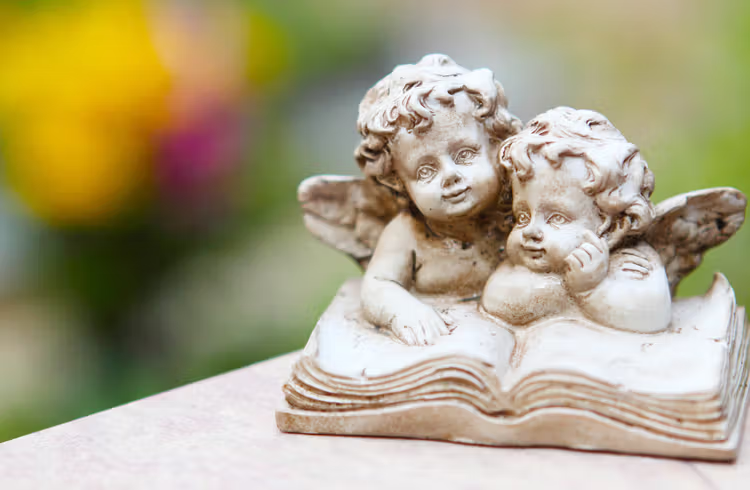How Identifying A Body In Real Life Is Nothing Like TV Or Movies
The lack of drama is definitely a good thing.

It’s an old trope of procedural TV shows and action movies: a family member is led into a cold, stark morgue, a sheet is dramatically whipped off or a bag is hastily unzipped, and the family member either nods stoically or collapses into a bawling mess as the hardened cop looks on. Or a person stands nervously behind glass staring into a strategically-lit metallic room while the coroner slowly reveals the deceased’s face for identification.
Identifying a body is nothing like this in real life.
In the unfortunate event you ever have to experience this, here are some of the key ways the process is more clinical and humane than you’d think. For those who have ever gone through this and can offer advice to prepare others, please share your story with us here.
FICTION: You are led into a cold, gray morgue where your loved one’s body is pulled out of a freezer right before your eyes.
Movies and TV love the dramatic reveal – especially since the corpses in question are almost always camera-ready. In reality, something as common as a broken jaw can seriously distort a face and make recognition difficult.
FACT: Most identification is done via photograph in a comfortable sitting room.
No dramatic reveals here. In fact, the photograph is often presented to the witnesses face down, and the chief medical examiner or morgue attendant calmly explains what they’re going to see to minimize shock.
FICTION: A surly, gum-snapping morgue attendant will just barely turn down his Lynyrd Skynyrd long enough to treat your loved one’s corpse like a frozen pizza.
Oh, and they ALL accept bribes. Slipping a morgue attendant $20 can get you access to bodies, medical files, computer records, and probably his car.
FACT: The viewing rooms are carefully monitored for anything that could upset or offend visiting families.
Background music is either nonexistent or of such elevator quality as to barely be noticed while you wait. Also, no religious iconography (crosses, etc.) are allowed anywhere as not to upset families. Bribing a morgue attendant is completely unnecessary and will not get you anywhere near an actual body.
FICTION: When the sheet is pulled off or the bag unzipped, the identifying person gasps in horror and shock. Passing out is likely.
They had no idea! No, this can’t be! It just can’t be! They were so young!
FACT: It’s usually not a surprise by the time someone is asked to identify a body.
The authorities are almost always certain of the body’s identity by the time they ask family, friends, or acquaintances (example: coworkers) to make it official, which allows them to prepare the identifiers accordingly. Yes, there’s a chance the body in question could have been carrying another person’s ID, or wearing clothes that aren’t theirs. But unless the body is a John or Jane Doe, this shouldn’t be much of a mystery. The same way a funeral home might ask you to identify a body on their premises to avoid mix-ups.
FICTION: After taking your $20 and showing you the body, the morgue attendant practically shoves you out the door before he gets caught.
In movies and TV, the whole experience of viewing a body is like buying stolen goods in a 7-11 parking lot. You speak in weird codes, secretly hand-off folded bills, and are hastily given your product before being shooed away.
FACT: Medical examiners, crisis counselors, and morgue attendants are there to help.
When the identifier(s) are finally given the photograph of their loved one, they can view it at their own pace. They are given all the time they need to work up the courage, with no toe-tapping detective leaning over their shoulder. Afterwards, the person in charge will offer to direct the family members to grief counseling or other services should they feel they need it.
FICTION: “Yep… look at that. The whole leg’s nearly gone.” <Character vomits>
“Have you ever seen a spleen that large?” “Not since breakfast.”
FACT: The photographs are tasteful.
The photograph or physical ID of the body (if necessary) will only include areas that are necessary for identification (example: face, birthmark, tattoo, or scar) and will – if possible – avoid showing gruesome or graphic injuries. It’s all about making the experience as non-traumatic as possible.
Share Your Stories
While the information we provided is quite general, and experiences may vary, it’s understood that this can be an extremely traumatic experience. If you’d like to share personal experiences, either as a someone who had to identify a body or a professional who deals with these situations every day, please tell us your story.
- How To Express Sympathy: What To Say And What...We’ve compiled a list of things to say—and things to avoid saying—when...Read more
- A Quick Overview Of Proper Funeral EtiquetteFunerals are emotionally complex, and knowing how to act can present a...Read more
- Paying Final Bills, Dues, And Estate ExpensesIn order to settle the estate, all outstanding bills and dues that the...Read more
- What To Wear To A Funeral Or Memorial ServiceIn many cultures black is the traditional color of mourning, however the...Read more



